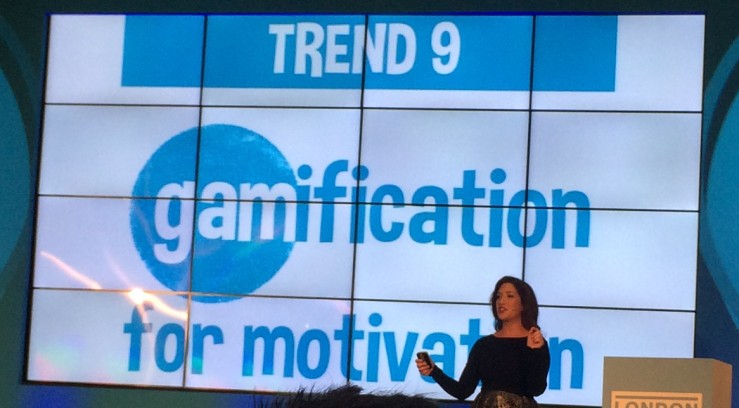 Over the last month, The Lawyer published a series of articles in which the natural structure of law firms was debated by Bruce MacEwen, Mark Brandon and Tim Bratton. Each of the articles, and most of the comments on them, is worthy of careful reading and reflection (registration is necessary to read the articles on The Lawyer website, but they are free to read).
Over the last month, The Lawyer published a series of articles in which the natural structure of law firms was debated by Bruce MacEwen, Mark Brandon and Tim Bratton. Each of the articles, and most of the comments on them, is worthy of careful reading and reflection (registration is necessary to read the articles on The Lawyer website, but they are free to read).
There are interesting points in each of the articles, so I particularly want to highlight some of the things that struck me.
The partnership debate
Bruce MacEwen’s position is simple: “Abandon the partnership model.” Amongst the reasons he cites in support of the proposition, his concerns about how partners behave in wielding power are intriguing. He says:
I aver that since lawyers can be legalistic, they (wrongly) translate the legal fact into the operative/managerial fiction that they ought to have a co-equal hand in control of the enterprise. They ought not. Yet it would be unavailing at best, and a career-ending injury at worst, to explain that to most partners when they attempt to grab the steering wheel.
…and thus:
The presumed right of any given partner to issue orders to others who do not in any organisational sense whatsoever report to that individual is nakedly premised on the trump card, “I’m the partner.” (Whether or not the card is actually played is mostly a matter of social grace and discretion; everyone knows the card is held in the partner’s hand.)
The result of this analysis is that perspectives on legal business from outside the partnership are almost always deprecated — even when those alternative views are better for the organisation or for clients, or are rooted in a more robust understanding of business — if partners feel that their personal status might be worsened.
I have seen this behaviour too often to disagree with Bruce’s observations, but I am not sure that it is due purely to the partnership model. I suspect that it is also linked to the undiversified nature of law firms. They are set up to provide legal services, and so legal knowledge, insight and experience is valued above all others. This is changing slightly. As Charlie Geffen, Gibson, Dunn and Crutcher’s London corporate chair, puts it in an interview with The Lawyer:
“Clients go to law firms for three reasons,” argues Geffen. “They either want advice on what to do, they want to know what the law is, something which is now largely available for free online or on websites, or they want an execution capability, which is commoditised.”
Each of these three components is very different now to 25 years ago, and each provides opportunities for different types of expertise.
Clients increasingly want advice on what to do that is not couched purely in terms of the legal options. They want more rounded advice, taking into account the personal and/or business context in which they act. Lawyers ignoring this dimension are becoming increasingly irrelevant. That, in turn, leads lawyers to have greater respect for expertise that they do not possess.
The kind of legal material that is freely available online may only be capable of answering basic queries about the law, but that is far more than used to be possible without access to a comprehensive legal library. This has effectively taken work away from lawyers, and the process is only accelerating. The availability of such material (and the more detailed content within legal subscription services) has enhanced the utility of anyone within a law firm who is able to extract information quickly and accurately. Often these are not lawyers, but specialist information and knowledge professionals.
Finally, the commoditisation of law firms’ execution capability has moved work from trainees and junior associates to paralegals, project managers, systems specialists and sales and management experts. Very few of these are lawyers, and their status within firms is growing.
The partnership model for law firms may not be dead, but it may need to start welcoming a range of new professionals.
Mark Brandon supports the continuing existence of the partnership model for a range of reasons. His article concludes with a call to history:
I’ve always found that success itself is rather a good guide to, er, success.
Pulling a dusty directory from my shelf, dated 1990, I can scan through the top law firms in the UK, 25 years ago. Clifford Chance. Linklaters. Freshfields. Allen & Overy. Slaughter and May.
If Amazon, Apple, Facebook, Google and Tesla are all still around in 25 years, I’ll eat the tablet you’re reading this on. Freshfields, it is worth remembering, is older than the United States of America.
As I have already suggested, legal practice 25 years ago had significant differences from now. Of the companies he mentions, only one (Apple) existed in 1990. All of them owe their current success to products or services that matured in the last quarter-century. As the advertisements for financial investment products warn:
Past performance is not a reliable guide to future performance. The value of your investment may go down as well as up.
In 1990, law firms only had to worry about competition between themselves. In the decade that followed, they even saw off attempts to enter the legal market by the big five accountancy firms (including Arthur Andersen, whose attempt was undermined by its own troubles). Now clients can look to a wider range of legal services providers, all of which are reportedly growing market share (albeit from a small base). I am not at all confident that the same names will appear at the top of the legal business lists in 2035.
One indicator that partnership is withering has been provided by a demographic study of law firm leaders in The American Lawyer. This found that partnerships are ageing, and the gap between law firm leaders and their workforce is increasing, compared to corporates. According to the analysis by Bill Henderson in The Legal Whiteboard:
BigLaw is getting grayer because the 100-year old gold factory is breaking down. Law firms’ portion of corporate legal spending is no longer growing, as in-house lawyers, NewLaw managed services shops (United Lex, Axiom, Counsel on Call), and technology are all curbing demand for traditional law firm services. The best economic play for 55- or 60-year old equity partner is to ride out the existing model with the dwindling but still substantial number of Baby Boomer senior in-house lawyers who are themselves not too anxious to change.
Henderson concludes:
[S]ome firms are several years into strategies that have the potential to take market share from peer firms. Further, the innovation teams inside these firms are having the time of their professional lives because the work is so collaborative and creative–the antithesis of billable hour work. What is also clear is that many competitors just can’t muster the leadership nerve to make similar investments.
In the years to come, some BigLaw firms are going to pull away from the rest, becoming a magnet for talent and then clients. Younger lawyers are going to thrive there. Another portion of BigLaw is going to gradually fade away.
The debate about the partnership model may well be resolved by the passage of time, rather than deliberate action.
Full-service complexity
I found the most interesting part of Mark Brandon’s contribution elsewhere than in his article. It was in the comments where he has an exchange with Jeremy Hopkins.
Jeremy makes a point similar to mine above (but more succinctly):
The deficiency of the partnership structure stems from the imbalance of influence – with lawyers leading on things that professional leaders should be – and the lack of permanent capital enabling long term thinking and investment in client relationships. …I doubt many non-partner senior managers from law firms will disagree with me.
Mark’s response ends with this statement:
I think it is because the law, and law firms, are infinitely more complex than anyone gives credit for.
And later he added:
I do think, though, that the challenge was summed up very neatly to me by the ex Big Four marketing professional opining on a colleague’s determination to teach lawyers a thing or two.
“Law,” she said. “You learn, or you leave, simple as that.”
The point about complexity is a powerful one. In addition to the three aspects to legal practice noted by Charlie Geffen, one has to factor in the existence of a range of very different professional practices — litigation, real estate, corporate, commercial, regulatory, and so on. Each of those is susceptible to different market pressures so that one’s approach a partner in the insolvency team would have to be very different to that taken when dealing with a real estate partner. They also practice Geffen’s three facets in varying amounts and in different ways. Commoditised execution capability for a corporate team with a ‘lumpy’ workload would need to be managed very differently from that supporting the steady caseload of a real estate practice. The information and knowledge needs of specialised regulatory lawyers are likely to be very different from those of transactional lawyers.
Blending all these components together should suggest that full-service law firms are far more complex beasts than any legal service provider that concentrates on just one of Geffen’s facets or on a reduced set of practice areas. That complexity may also lead to forms of competition for support and focus of internal resources that is absent in simpler businesses like manufacturing or even some other professional services.
I have discussed complexity before on the blog, and I think it is poorly understood. One aspect of this misunderstanding is that people often try to reduce it to simple terms. That may work for a while but, before long, reality reasserts itself and the simple structure breaks (often to be replaced by another version). Managing in a complex environment means understanding and accommodating an unpredictable array of actions and activities. Rigid and unforgiving management structures are poorly suited to this. Engagement with a wide range of members of the complex system will almost invariably produce a better outcome. Some aspects of partner behaviour, reward, support and participation should be improved. But as Mark Brandon points out, partnership provides that engagement.
But what about the business model?
Tim Bratton’s take on this debate draws on the same comment by Jeremy Hopkins that I quoted above, which starts: “The whole structure thing is a red herring.” Tim’s own position is clear:
I would like to highlight an important omission from the debate. Which is the voice of the client. What does the client want from ‘tomorrow’s law firm’?
His conclusion?
The Amazon et als do not succeed because of their structure. They succeed because they not only know what their customers want, but more pertinently they continually invest in knowing what their customers don’t even know they want until they have it. This is called product development or R&D in most sectors.
When I was a GC looking at professional life through a client lens, the best external advisers helped make my job easier. They did this by knowing what I needed, in the very best cases before I did. As someone helping to run a client-focused business, this is always front of my mind.
Business models and product development facilitate effective client service far more than corporate structures ever will.
As it happens, I think these are areas where many traditional law firms fail miserably. There has been a huge amount of innovation in the law over recent years. As Jeremy Hopkins pointed out recently, much of it has taken place within in-house legal teams. Businesses providing legal support services (such as publishers and technology suppliers) have also driven changes within law firms. And then we have the new legal businesses, such as the one that Tim works for, all of which have examined the client experience and adopted a different business model to improve the service they provide. There have been some changes in the way firms deliver their services, especially in the use of technology and specialised execution capability. Very few law firms have fundamentally changed their business model.
Bruce MacEwen recently took a look at the R&D question. By comparison with other sectors, law firms invest much less of their annual revenue in activities that could be termed R&D or product development. That isn’t to say that they don’t develop new things, but that development tends to come about in a more haphazard manner.
Partnership may be fine for the full-service law firm, but other legal businesses whose services are more streamlined and less complex appear to be better at adapting themselves to client need. There appears to be a strong correlation with corporate structure, but I don’t think there is a causative link. Partnerships could easily adapt to invest more in client service than they do currently. They might even be able to do so speedily.








 The ‘entreployee’ is someone employed by an organisation that encourages its people to spend time coming up with ideas that might be interesting (just like an entrepreneur). Randi referred to Google’s 20% time and Facebook’s hackathons. She was under no illusion that the ideas coming out of these events would all be useful — she mentioned a Facebook engineer linking a mini-trampoline to an iPhone so that the phone could be unlocked by replicating a particular jump. That was probably the worst idea she had ever seen.
The ‘entreployee’ is someone employed by an organisation that encourages its people to spend time coming up with ideas that might be interesting (just like an entrepreneur). Randi referred to Google’s 20% time and Facebook’s hackathons. She was under no illusion that the ideas coming out of these events would all be useful — she mentioned a Facebook engineer linking a mini-trampoline to an iPhone so that the phone could be unlocked by replicating a particular jump. That was probably the worst idea she had ever seen.





















